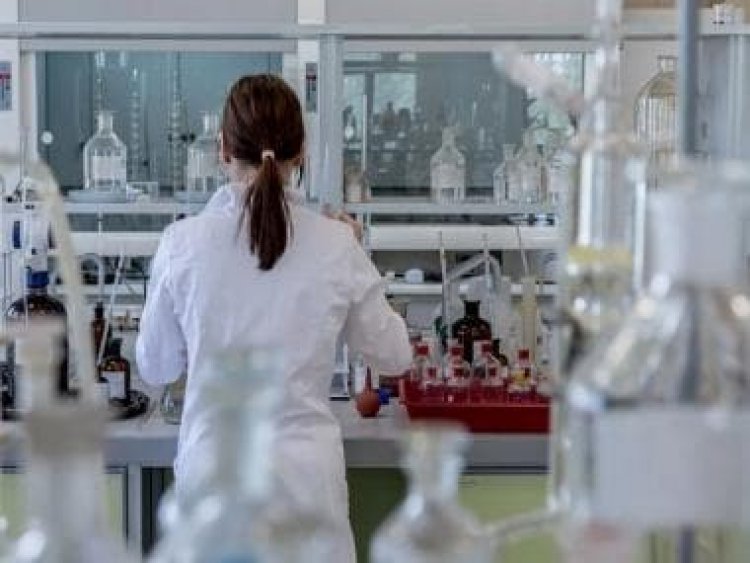'Dil dhadakne do': How scientists grew a piece of a human heart in a laboratory
'Dil dhadakne do': How scientists grew a piece of a human heart in a laboratory

Who knew that the concept of an ‘artificial heart’ that we had only heard in sad romantic songs would become a reality?
Scientists and researchers from University of Toronto and University of Montreal in Canada have managed to grow a piece of a human heart under laboratory conditions. And the best part, it beats.
The scientists reverse-engineered a millimetre long vessel that beats like a real biological vessel would. According to ScienceAlert, the miniature model of this human heart’s left ventricle also pumps fluid “just like the muscular exit-chamber of a human embryo’s heart would.”
The reason why scientists chose to recreate the left ventricle of a heart is because it’s the main chamber that pumps oxygenated blood into the aorta, which then carries it to the rest of the body.
Let’s take a closer look at this new discovery.
How was the piece of heart created?
This isn’t the first time a three-dimensional model of a body part has been created in lab. Researchers from all over the world have created 3D models that develop and function just as they are intended to, that is, without becoming fully functional organs.
Milica Radisic, a professor at the Institute of Biomedical Engineering at the university, and her team created the ventricular tissue at a micron scale. This new replica of heart was made using a mix of synthetic and biological materials.
The cells were derived from the cardiovascular tissues of young rats. These tissues were then grown on a layer of scaffold printed out of a biocompatible polymer. These scaffolds have mesh-like structures that are planted with the heart muscle cells.
This flat mesh forces the miniature model to mimic the alignment of a human heart’s left ventricle. The tube-shaped structure pumps fluid out of a hole at the end. According to a Business Insider report, the inner diameter of the tube measures 0.5 millimetres and it covers a height of about one millimetre. These dimensions make the structure similar to the size of the ventricle of a foetus at its 19th week of gestation.
The team also measured the ejection volume and pressure using a conductance catheter, the same kind that is used in patients. Currently, the ejection volume is less than five per cent than that of a human heart.
Sargol Okhovatian, a biomedical engineer at the University of Toronto said, “With our model, we can measure ejection volume – how much fluid gets pushed out each time the ventricle contracts—as well as the pressure of that fluid.”
What led scientists to grow a heart piece?
According to World Health Organisation (WHO), cardiovascular diseases (CVDs) are the leading cause of deaths globally. In 2019, 17.9 million people died of CVDs. This is where the new discovery might come in handy. Through this tiny working model of the left ventricle, scientists can develop novel drugs and therapies and also study how CVDs can develop.
Since there are only a handful of approaches that can be used to study the ways a diseased or healthy heart channels blood in to the body, through the development of 3D models like these, researchers and scientists are able to test how a living heart functions under the influence of new treatments.
“With these models, we can study not only cell function, but tissue function and organ function, all without the need for invasive surgery or animal experimentation,” said Milica Radisic.
What other body parts have been grown in a lab?
From mini kidneys to mini lungs, scientists have tried their hands on developing structures of several internal body parts under laboratory conditions.
A team of Australian scientists grew a mini kidney. They formed an organ with the three distinct types of kidney cells. The kidney was grown in a process that followed normal kidney development, according to a report on LiveScience.
The Ohio State University, attempted to grow a brain which was the size of a pencil eraser. The mini brain was structurally and genetically similar to a five-week-old human foetus’ brain. Described as “a brain changer”, the structure carried functioning neurons.
A group of scientists from several institutions made collaborative efforts to grow 3D lung structures that later developed airway structures and lung sacs. According to LiveScience, the mini lungs survived in the lab for more than 100 days.
With inputs from agencies
Read all the Latest News, Trending News, Cricket News, Bollywood News,
India News and Entertainment News here. Follow us on Facebook, Twitter and Instagram.
What's Your Reaction?




























































